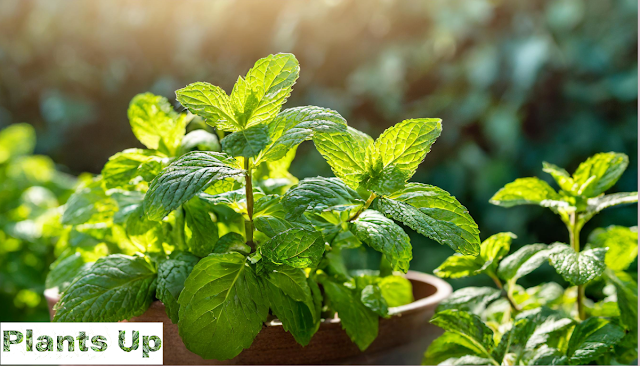.jpg) |
| Delhi NCR Weather: Impact of Continuous Rain on Plants |
Delhi, the capital city of India, has recently witnessed a prolonged period of continuous rainfall, bringing about substantial transformations in its environment. This article delves into the profound impact of this extended rainy weather on plants and their remarkable ability to adapt to these challenging conditions.
By understanding the effects of prolonged rain on plants in Delhi/NCR,
we can gain insights into the resilience and strategies employed by these living organisms to thrive amidst changing weather patterns. From altered growth patterns to enhanced water absorption mechanisms, exploring how plants respond to continuous rain can provide valuable knowledge for gardeners, horticulturists, and nature enthusiasts in Delhi/NCR and beyond.Increased Moisture Levels:
- Continuous rain results in saturated soil, leading to higher moisture levels. Excess moisture can have both positive and negative effects on plants.
- Some plants thrive in moist conditions and exhibit vigorous growth during periods of continuous rain.
- However, prolonged saturation of the soil can also lead to waterlogging, depriving plant roots of oxygen and impeding their ability to absorb nutrients.
- Excessive moisture can promote the growth of fungi and other pathogens, increasing the risk of plant diseases.
Nutrient Leaching:
- Heavy rainfall can cause the leaching of essential nutrients from the soil. Nutrient leaching occurs when water washes away nutrients, carrying them deep into the soil or out of the root zone.
- As rainwater percolates through the soil, it can dissolve and carry away valuable nutrients, such as nitrogen, potassium, and phosphorus.
- Nutrient leaching can result in nutrient deficiencies in plants, affecting their growth, flowering, and fruiting.
- To mitigate the effects of nutrient leaching, gardeners and farmers may need to supplement the soil with organic matter or apply fertilizers to replenish the nutrient levels.
It's important to note that the impact of increased moisture levels and nutrient leaching can vary depending on the specific plant species, soil composition, and drainage conditions. Proper soil management, including appropriate drainage systems and regular soil testing, can help mitigate these effects and ensure the overall health and well-being of plants in Delhi's rainy weather.
Root Health and Oxygen Availability:
- Excessive waterlogging due to continuous rain can lead to oxygen deprivation in the soil, impeding root health and functionality.
- Plant roots require oxygen for proper respiration and nutrient uptake. When the soil is waterlogged, air pockets in the soil are filled with water, limiting the availability of oxygen to the roots.
- Oxygen-deprived roots may become stressed, leading to reduced growth, wilting, and even root rot diseases.
- To improve oxygen availability, ensuring proper drainage in the garden or landscape is crucial. This can be achieved by implementing measures such as raised beds, improving soil structure, or installing drainage systems.
Fungal and Bacterial Diseases:
- Persistent rain creates a conducive environment for the growth and spread of fungal and bacterial diseases in plants.
- Excessive moisture on plant surfaces promotes the development of fungal spores, which can cause diseases like leaf spots, powdery mildew, and blight.
- Bacterial pathogens also thrive in wet conditions and can infect plants, leading to symptoms such as wilting, leaf necrosis, and cankers.
- To minimize the risk of fungal and bacterial diseases, practicing good plant hygiene, such as removing infected plant parts, improving air circulation, and applying appropriate fungicides or bactericides, may be necessary.
Flooding Risks:
- Continuous rain, especially in areas with poor drainage, can result in waterlogged conditions and even flooding.
- Flooding poses a significant threat to plant survival as it can drown the roots and deprive plants of oxygen and essential nutrients.
- Prolonged submersion of plants in water can lead to root suffocation, root rot, and overall decline in plant health.
- In areas prone to flooding, selecting flood-tolerant plant species and ensuring proper land grading and drainage systems are essential to mitigate the risks associated with continuous rain.
By understanding the potential effects of continuous rain on plants, gardeners and plant enthusiasts in Delhi can implement appropriate measures to support plant health, minimize damage, and ensure the resilience of their gardens and landscapes.
In conclusion, the continuous rainfall experienced in Delhi/NCR has brought about various effects on plants. The increased moisture levels and nutrient leaching can impact plant growth and productivity. Additionally, root health may be compromised due to restricted oxygen availability and the potential for root rot diseases. The favorable conditions for fungal and bacterial diseases pose a further challenge to plant health. Moreover, the risk of flooding in poorly drained areas can lead to severe damage or even the death of plants.
It is essential for gardeners and plant enthusiasts to be proactive in addressing these challenges by ensuring proper drainage, practicing good plant hygiene, and selecting flood-tolerant species. By taking these measures, we can help plants adapt to and thrive in the face of continuous rainy weather in Delhi/NCR.
Happy Gardening!
Keywords: delhi weather,delhi weather news,delhi weather update,delhi ncr weather,weather in delhi,delhi weather today,delhi weather forecast,delhi ncr weather update,weather update delhi,delhi weather update today,weather update,delhi weather today news,weather,imd weather update,weather update today,india weather update,weather updates,weather today,weather forecast,weather report,weather news,delhi weather report,rain in delhi,delhi rain,delhi rains
